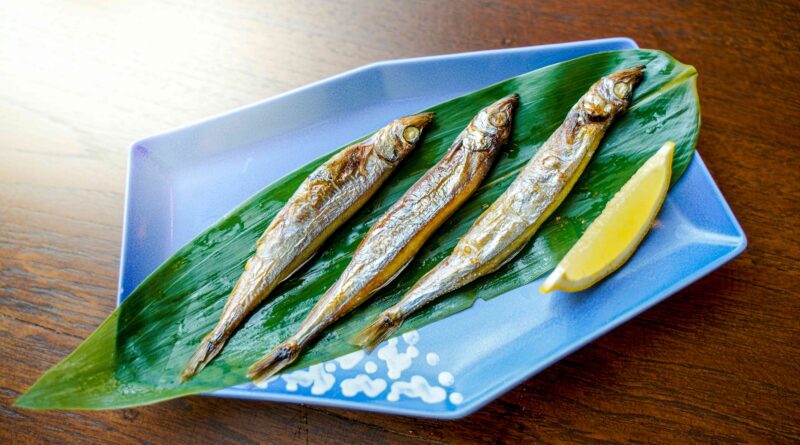Eating Little Fish May Offer Big Longevity Benefits, Study Shows
While big fish like salmon and tuna have been in the limelight for their health benefits, recent evidence shows that fish lower down the food chain also have a lot to offer. about them. In fact, a study published recently in the journal Public Health Nutrition found a significant association between eating small fish—from the bones to the heads—and a reduced risk of death in women.
«Few studies have focused on the effect of small fish consumption specifically on health outcomes,» Chinatsu Kasahara, lead author and associate professor at Nagoya University’s Graduate School of Medicine in Japan, said in a statement. The link between eating small fish and reducing the risk of death in women «underscores the importance of this nutrient-dense food in the human diet.»
Although the study was limited to Japan, the researchers believe that the results can be transferred to the population of the world. «Although our findings were only among Japanese people, they should be important to other nations,» Kasahara said.
BbenPhotographer/Getty Images
Eating small fish is common in Japan, and Kasahara said his interest in the subject was personal—he has been eating small fish since childhood. He said: «Now I feed my children here.»
To examine the relationship between eating small fish and mortality, Kasahara and his colleagues recruited 80,802 Japanese participants between the ages of 35 and 69 for the study. They were 34,555 men and 46,247 women.
They used food frequency questionnaires to analyze participants’ diets, focusing on whether they ate small fish such as Atlantic capelin, dried sardines, Japanese smelt, small horse mackerel and small sweetfish.
During the nine-year study, 2,482 participants died. Of these, 1,495 were related to cancer.
After adjusting for factors such as age, body mass index (BMI), alcohol consumption, and smoking frequency, the researchers found a significant association between frequent consumption of small fish among women and a reduction in mortality. related to cancer for any reason.
Women who ate small amounts of fish two to three times a month had a 32% lower risk of dying from all causes, and a 28% lower risk of dying from cancer. compared to those who did not eat small fish regularly. Those who ate small amounts of fish one to two times per week or three or more times per week had a 28% and 31% reduced risk of all-cause mortality, respectively. respectively, with a 29% and 36% lower chance of cancer-related death.
The data revealed a similar pattern for men, but the relationship between the consumption of small fish and the lower probability of death was not statistically significant.
The reason for this was unclear to the researchers, but they speculated that it may be due to the small sample of men in the study and factors that were not captured, such as fish serving size and sex-specific cancer screening. .
Historically, small fish have been neglected in Western society.
«We often underestimate these fish in the West, we like high-quality fish,» Sharon Palmer, RDN, nutritionist and co-founder of Food + Planet, told. Good health. «Currently, a large part of the world’s small fish supply is used as food for aquaculture.»
But small fish are very nutritious, especially since they are usually eaten whole. The head, bones and organs of small fish are rich in calcium, vitamin D and vitamin A.
Small fish such as sardines and anchovies are also «a rich source of nutrients such as omega-3 fatty acids. [and] protein,» Roxana Ehsani, RD, a board-certified nutritionist in Miami, Florida, said. Good health.
Micronutrients found in small fish have been shown to support healthy bones, immune system, heart, muscles, skin and metabolism. They can also reduce inflammation in the body, which, if left untreated, can increase the risk of conditions such as diabetes, heart disease and asthma.
«Additionally, these types of fish are often more sustainable than other larger fish because they are more abundant, lower on the food chain, and have a shorter lifespan,» Palmer added. «This means they usually have less environmental toxicity.»
Types of small fish that are readily available include anchovies, sardines, small mackerel and herring. Kipper and smelt can also be found but can be difficult to track.
Although a fish company may carry some of these small fish, your best bet is the canned food route. Canned sardines and anchovies are available in almost every major grocery store across America, and many stores also carry canned mackerel and herring. Small fish are also available in some world food markets, such as Asian supermarkets, usually dried. Some markets may carry a variety of small fish options in the frozen section.
«Although choosing small fish provides a method of local food systems by providing good nutrition with a minimal impact on the marine environment, it is still important that these products are well managed as the fish small ones play an important role in this environment,» Palmer said. .
To make sure you’re buying small, sustainably farmed fish, ask your fishmonger how they were caught or check the food label for the correct information. You can also search Seafood Watch, an environmental database on a wide range of products.
Small fish can make a nutritious snack when eaten straight from the can or you can add them to many dishes for a briny, umami flavor. Try any of the salads, stir-fries, rice dishes, soups, curries, or stews, and choose anchovies in pasta puttanesca, Caesar salad dressing, and bagna cauda.
Another idea: Make a delicious fish salad by mixing sardines, mackerel, or herring with mayonnaise, celery, capers, and red onion.
Ehsani suggested: «To get the most health benefits from small fish, try for at least two servings a week.»
#Eating #Fish #Offer #Big #Longevity #Benefits #Study #Shows
